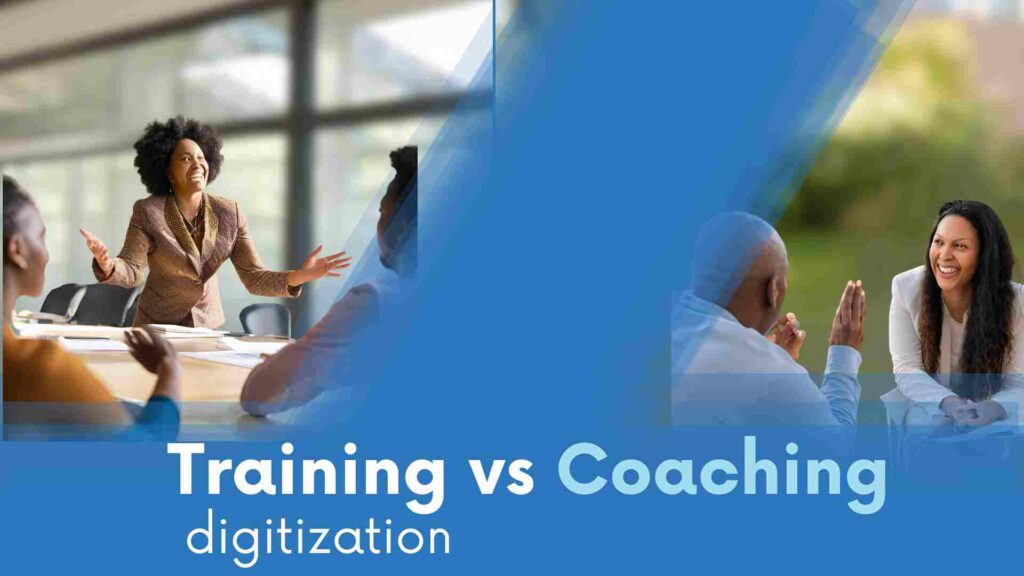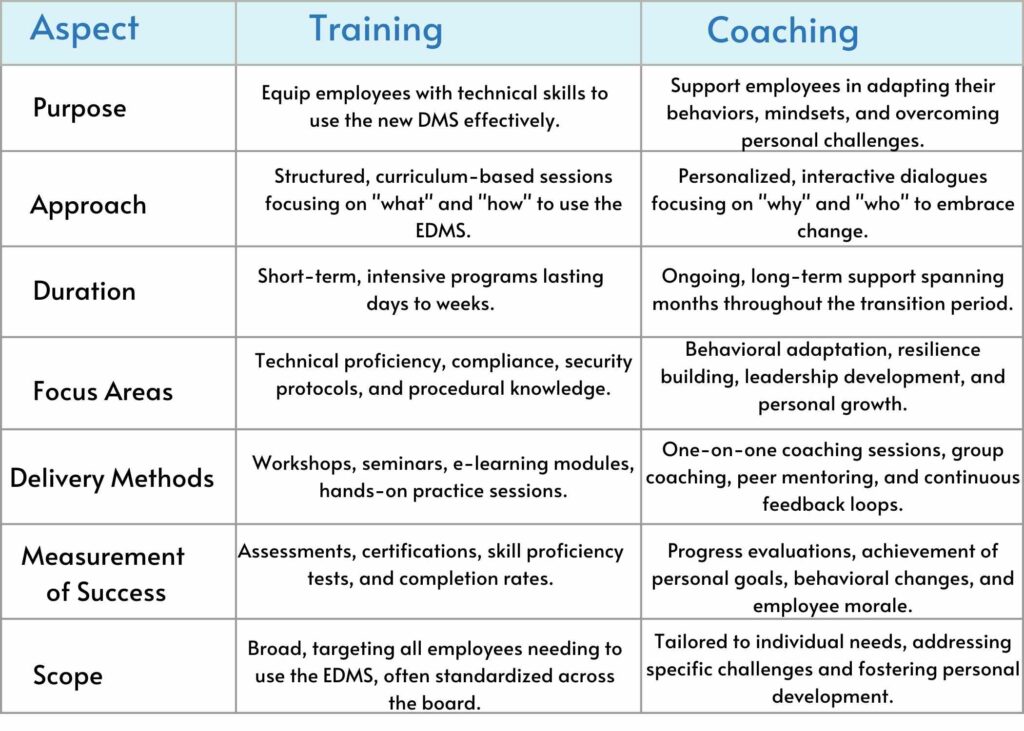
A well established financial institution with a 50 years history and serving a niche clientele was managing a huge amount of documents. These include customer records, transaction histories, compliance reports and internal communications.
To improve on their operations efficiency, reduce storage costs, and improve access to data through ease of search ability, the institution initiated a document digitization project aimed at converting all their accumulated paper documents into digital documents.
The institution also wanted the use of digital documents engrained in its culture.
But it faced several challenges which included :
- Resistance to change : Employees who were used to paper based systems and were not comfortable with digital documents
- Skill gaps: The new digital systems required technical skills that many employees lacked. Some employees were not even comfortable using computers.
- Data Security concerns : Security of sensitive documents was a major concern during and after digitization.
- Maintaining productivity : Disruption to daily operations during the transition was to be very minimal.
Comparison Training vs Coaching in Digitization

How were these challenges going to be addressed?
Addressing these challenges required a dual approach leveraging on training and coaching to ensure smooth transition to a digital work space.
Digitization : Training
Training on technical skills and knowledge:
This focused on training the employees on the necessary technical skills and knowledge so as to be able to use the systems seamlessly.
Compliance and Security training:
Training employees on data protection measures with emphasis on the importance of safeguarding sensitive financial information.
Training on compliance requirements related to digital documents to ensure adherence to industry standards and legal obligations.
Change management workshops :
These were sessions to help the team understand the reasons and the benefits behind the digitization project.
This would also help overcome resistance by the team. This was to be done by addressing common fears and misconceptions.
Digitization : Coaching
The financial institution had the option of choosing a coaching program best suited to their needs.
This was aimed to support the human behavioral aspects of the transition. It would also help in fostering adaptability and resilience of the team. These included
Personalized Coaching for Employees :
These were to be One-on-One Sessions whereby professional coaches were to be assigned to help employees navigate personal challenges related to the transition, build confidence in using digital tools and develop a positive attitude towards change.
The coaches were to work with employees to set individual goals related to the adoption of the new DMS and hold them accountable for achieving these goals.
Leadership Coaching :
This would provide coaching to senior leaders to enhance their change management skills, enabling them to effectively lead their teams through the digitization process.
The team leaders would engage in coaching their teams, promoting collaboration, addressing concerns, and fostering a supportive environment.
Peer Coaching and Mentorship Programs :
This would establish a peer coaching system where tech-savvy employees mentored those less comfortable with digital tools, facilitating knowledge sharing and mutual support.
This would lead to the creation of small groups where employees could discuss challenges, share experiences, and collectively find solutions.
Continuous Support and Feedback :
This would require scheduling periodic coaching sessions to monitor progress, address emerging issues, and provide ongoing support.
Channels would be implemented for employees to provide feedback on the digitization process, enabling coaches to tailor their support accordingly.
In Digitization : Can training alone work?
Although training is an essential part during transition. Training alone would not address all the challenges the institution was going through during transition.
Some of the aspects that would not be addressed if working with training alone include :
Resistance to Change :
Training would only address the “how” but not the “why.” Employees would understand new processes but still resist changing their habits or mindset.
Cultural Barriers :
Organizational culture plays a pivotal role in how change is received.
Training alone would not shift deeply ingrained cultural norms or values.
Fear and Anxiety :
Training alone would not alleviate the team’s fear of job loss, increased workloads, or inability to adapt to the transition.
Engagement and Motivation :
Without addressing the emotional aspects, employees would not participate in training sessions without genuine commitment or enthusiasm.
Lack of Leadership Buy-In :
Successful change required active support and modeling from leadership. Training alone would not ensure leaders were fully engaged or aligned with the change.
Ongoing Support :
Training is typically a one-time or short-term intervention.
Continuous support mechanisms would be necessary to reinforce learning and application.
Long-Term Adoption :
Without mechanisms to sustain and build upon training, skills and knowledge would deteriorate over time.
Adaptability :
Organizations must continuously adapt to new challenges.
Training alone would not foster the agility and resilience needed for ongoing change.
Example:
If the financial institution was to implement training only without coaching what would happen?
This would be done through launching training workshops for a number of days. The team would then be trained on how to use the electronic document management system.
What would be the outcome of Training Only?
Positive Outcome
Skills and Technical knowledge addressed : The team would become proficient in using the electronic document management system.
Negative Outcome
Resistance to change : Resistance would remain among some staff who feel the change is unnecessary or disruptive.
Not Realizing full potential of digitization : The full potential of the system would not be realized, leading to underutilization and mixed results. This is because of not addressing the underlying attitudes and providing ongoing support,
In Digitization : Can Coaching alone work?
While coaching is an essential part in the digitization process, if implemented alone certain factors that can be addressed by training would be neglected.
And this would include :
Skill Gaps :
The technical skills or knowledge required to implement new systems or processes would go unaddressed.
Limited immediate impact :
Coaching tends to focus on long-term development, which may not address immediate operational needs or urgent skill requirements during a rapid change.
Scaling issues :
Coaching is resource-intensive, often requiring significant time and personnel investment, which can be challenging to scale across large organizations.
Example:
If the financial institution was to implement coaching only and not training this is what could happen
Executive Coaching: Senior leaders would receive coaching to develop change management skills, improve communication, and lead by example.
Individual Coaching: Employees would receive one-on-one coaching to address personal resistance, build confidence in using digital tools, and develop strategies for adapting to new workflows.
Group Coaching Sessions: Teams would participate in group coaching to enhance collaboration, share experiences, and collectively solve problems related to digitization.
What would be the outcome of Coaching Only ?
Positive outcome
Leadership Effectiveness: Leaders would become more adept at managing their teams, resulting in smoother transitions and higher morale.
Increased Adaptability: The team would report feeling more supported and better able to adapt their behaviors to embrace digital processes.
Enhanced Collaboration: Group coaching would foster a sense of community and collective problem-solving, improving team dynamics.
Negative Outcome
Technical Proficiency: The team would still be struggling with the technical aspects of the new Document Management System (DMS) due to the absence of structured technical training.
Adoption Rates: While attitudes would improve, actual usage of the DMS would remain inconsistent, highlighting the need for formal training to complement coaching.
Implementation of the digitization project
Planning and Assessment :
Surveys and interviews to evaluate employees’ readiness for digitization and identify potential resistance areas were done in the initial stages.
Assessment of the team’s current technical competencies to determine the training required for the new DMS was also done.
Training :
Training sessions to accommodate different schedules, offering both in-person and virtual options to ensure maximum participation was organized.
They invested in high quality training materials and engaged experts to deliver specialized training modules.
Coaching integration :
Coaches were assigned to the team based on their roles, needs, and personal preferences to ensure effective support.
Initiation of one-on-one coaching sessions, team coaching, and peer mentorship programs was done to work concurrently with training initiatives.
Monitoring and Evaluation :
Utilization of key performance indicators (KPIs) such as EDMS adoption rates, user proficiency levels, and employee satisfaction scores was used to monitor the effectiveness of training and coaching.
This meant adjusting strategies based on feedback and performance data, refined training content and coaching approaches to better meet the teams needs.
And with this process installation and digitization of the paper documents is also ongoing.
Conclusion
The financial institution achieved significant success through the integrated use of training and coaching in their document digitization project.
Training Outcome :
- High Skill Acquisition: 95% of employees completed the technical training programs, demonstrating proficiency in using the new DMS.
- Compliance Adherence: 100% compliance with data security protocols was achieved, minimizing the risk of data breaches.
- Operational Efficiency: Document retrieval times decreased by 40%, and storage costs reduced by 30% within the first six months post-implementation.
Coaching Outcomes :
- Enhanced Adaptability: Employees reported increased comfort and confidence in using digital tools, with a 20% improvement in digital literacy scores.
- Reduced Resistance: Surveys indicated a 25% decrease in resistance to change, with more employees embracing the benefits of digitization.
- Improved Morale and Engagement: Employee satisfaction related to the transition increased by 15%, reflecting higher morale and engagement levels.
- Leadership Effectiveness: Leaders trained through coaching exhibited better change management skills, resulting in smoother team transitions and higher team performance.
Training was instrumental in equipping the team with the necessary technical skills, ensuring the efficient and secure use of the new EDMS.
Coaching addressed the psychological and behavioral aspects of change, fostering a supportive and adaptable workforce capable of embracing digital innovations.

